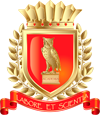Alexander Stoletov
КомментарииПолная версия работы доступна во вкладке "Файлы работы" в формате PDF
Alexander Stoletov is one of the founders of Russian physics. He owns research in the field of magnetism and photovoltaic phenomena, in which he revealed the most important laws of these phenomena, created a method of experimental study of the magnetic properties of materials and electric discharge in gases. His studies of the magnetic properties of iron formed the basis of rational methods of calculation of electric machines. Alexander Stoletov is also one of the founders of modern electrical engineering.
Alexander Stoletov was born in Vladimir on Klyazma August 10, 1839 in a poor family. He was interested in many subjects in school years. He liked botany, collected plants and made herbarium. He was interested in physics and reproduced at home physical experiences he had seen in the classroom. In 1856 he graduated from high school with a gold medal. In the same year, Alexander Stoletov entered Moscow University at the mathematical Department of the faculty of physics and mathematics. In his student years he got a real love for physics, although the conditions of University teaching contributed to this very little. Lectures on experimental physics were poor in content and poorly furnished with demonstrations. There was no physical laboratory. The course of theoretical or mathematical physics was not read.
In 1862 Mr. Stoletov went to a business trip abroad to Heidelberg, where he was attracted by the names of famous scientists - Kirchhoff, Helmholtz and Bunsen. During his trip abroad, which lasted three and a half years, he worked in Göttingen, Heidelberg for the physicist Kirchhoff and in Berlin, where he attended lectures by scientists Magnus. He visited Paris, where he got acquainted with the teaching at Sorbonne (University of Paris).
When Stoletov returned to Moscow he immediately took an active part in improving the teaching of physics at the University. After defending his thesis in 1869 he received the title of associate Professor in the Department of physics and began to lecture on theoretical physics. At the same time, Alexander Stoletov began to think about the organization of the physical laboratory and to conduct preparatory work on the selection of tasks for the physical workshop.
He organized a physical class, which worked in his apartment. On the mug read abstracts, conducted a lively debate, discussed the research work. Alexander Stoletov brought together young physicist. His first students were later famous Russian scientists N.A. Umov, N. E. Zhukovsky and many others. His class was attended by famous astronomer F.A. Bredikhin, Professor V.Singer, mechanic F.A. Sludsky.
The research group of Alexander Stoletov was soon supplemented by mathematicians. This class was merged with the physical Department of the society of natural Sciences at the suggestion of the Alexander Stoletov, who was then elected its Chairman in 1881.
The activity of Alexander Stoletov developed in 1872 after his doctoral thesis “The study of the soft iron function”, which was the result of the experimental work of Alexander Stoletov. He carried out the experimental part of his dissertation during a six-month business trip in 1871 to Heidelberg in the laboratory of Kirchhoff, who highly appreciated the talents of Alexander Stoletov and willingly gave him a place in his laboratory. Alexander Stoletov was approved as an ordinary Professor in 1873.
Persistent efforts of Alexander Stoletov were crowned with success. The physical laboratory was organized in Moscow University not only for educational work, but also for experimental research work. It was open for students, professor with his assistants and young scientists. Alexander Stoletov carried out his remarkable research in this laboratory which glorified his name.
Scientific activity of Alexander Stoletov concerned many departments of physics. He worked on electrostatics, magnetism, electromagnetism, the critical state of bodies, photovoltaic or, as he called it, actinic-electric phenomena. He left a deep trace in each of these areas of physics.
The most outstanding work of Alexander Stoletov is his study of the influence of light on electrical discharges in gases (actino-electrical phenomena). It clarified the experimental side and established the basic laws of this phenomenon. He discovered the saturation current in the gases; he built the first solar cell, which he called the air element, he established an important law of discharge in gases, called the "law of the Stoletov ".
Alexander Stoletov used first a galvanometer to study the current through the gas (air). Now this technique is widely used in all studies of the passage of electricity through gases.
The laws discovered by Alexander Stoletov formed the basis of modern theories of electric discharge in gases. He was also an outstanding lecturer. Lectures on experimental physics were willingly visited by students from other courses and even other faculties. The demonstration atmosphere of the lectures was always perfect. Stoletov introduced the latest scientific news. Scientific and social activity of Alexander Stoletov extended to scientific international relations. He responded sensitively to the appeal of the international Committee for honoring Helmholtz on the day of his seventieth birthday in 1891.
Alexander Stoletov lived a great and glorious life. He dedicated it to the creation and development of Russian physics. The Motherland will always honor Alexander Stoletov as one of the founders of Russian physics, as the Creator of the first Russian physical research laboratory.
References:
1. https://en.wikipedia.org
2. http://nplit.ru/books
3. "Учёные записки Московского университета", юбилейная серия, в. LII, Физика, М., 1940 (статьи А. К. Тимирязева и Н. А. Капцова)
4. Столетие со дня рождения А. Г. Столетова, "Успехи физических наук", М.-Л., 1939, т. XXII, вып. 4 (статьи К. А. Тимирязева и Н. С. Хлебникова)
